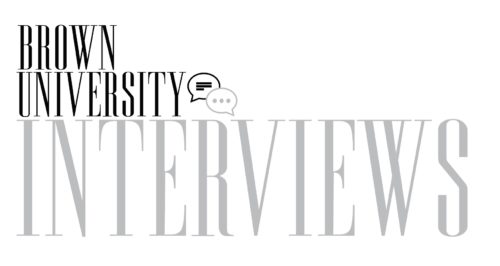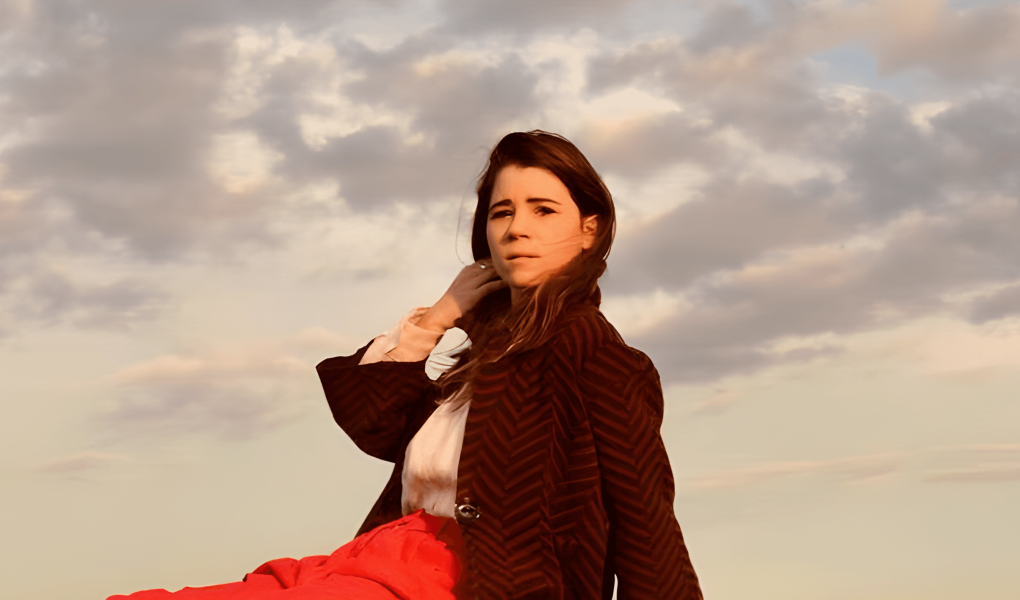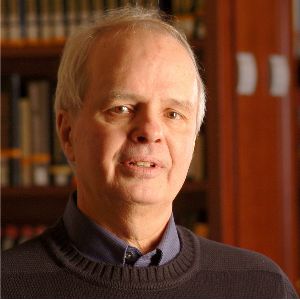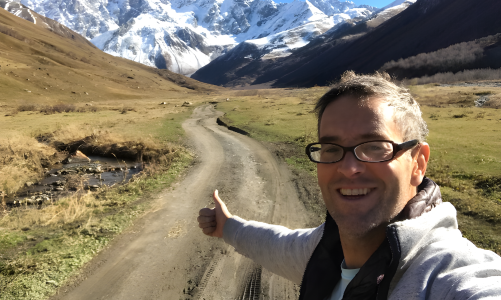
Aly Spaltro, known publicly as Lady Lamb, is a singer and songwriter. She recently released In the Mammoth Nothing of the Night, which is a box set and deluxe album to celebrate the ten-year anniversary of her first studio album, Ripely Pine. Spaltro played in Providence this fall at Anyhow Studio, and she is currently touring through Undertow Shows, which is an organization that designs small-scale private concert experiences in fan-based venues. Spaltro will play a full-band show at The Sinclair in Boston on Friday, September 22nd, 2023.
In this interview, we discussed the creation of In the Mammoth Nothing of the Night, the importance of queer spaces, and sourcing energy from fan interactions.
Ava Filiss: You recently released In the Mammoth Nothing of the Night, a box set meant to celebrate the 10-year anniversary of your album Ripely Pine. Both “ripely pine” and “in the mammoth nothing of the night” are a set of lyrics from your song “The Nothing Pt II.” Why did you choose to highlight these particular lyrics and what, to you, makes them define this album?
Aly Spaltro: In the original process of recording, I wasn’t set on a name for many, many months, but I felt that “The Nothing Part II” was a really meaningful song on the album. It encapsulated the feelings of longing that I felt, but also the feelings of peace that I was seeking at that age. That’s why I landed on the title of Ripely Pine.
While I was creating this box set, I had no idea what I was gonna call it. In all honesty, I was so swamped with other tasks. I designed all the artwork for the box set. I did all the graphic layouts for it. I produced it. I was really overwhelmed with just the amount of work that went into the project that the title of it was really an afterthought. I was just like, “I guess I’ll call it 10 years of Ripely Pine’. So that was what the title was. It was 10 years of Ripely Pine. I designed that title into the spine of the artwork and sent it off, and my label started sending out a press release with that title.
And then, I kid you not, I just woke up in the middle of the night in a panic thinking, “Oh my God, why didn’t I call it In the Mammoth Nothing of the Night?” I was thinking about where the title Ripely Pine lands in “The Nothing Part II”. “In the mammoth nothing of the night” is the continuing lyric of that phrase. And “in the mammoth nothing of the night” is how I would describe the time of the night when I wrote the record originally — two, three, four, five in the morning when most people are sleeping. I ended up panicking and sitting on that realization for a while. I was absolutely devastated that I didn’t name it that. And then I called my record label guy, Ben, and I was like, “Ok, this is wild. But how possible is it that I go in and change the title?” And the manufacturing company was so cool. They let me have a day to redo the title on the spine of the record. If anyone ever sees the title as 10 years of Ripely Pine, it is still on the vinyl labels in the box set, because I had to let go of that. I will say one of the big dramas of making the box was me trying to change the title after I’d sent it off.
Let’s talk more about your creation of the box set — specifically the genesis of the previously unreleased songs that made it onto the album. Did you do much tweaking of those songs from how they were originally written 10 years ago? If you did, what was that creative process like?
That’s a great question. I recorded 23 new recordings for the box and 6 of them are reimaginings from Ripely Pine. I also enlisted two good friends of mine to arrange the instrumentation for two of the original songs on Ripely Pine. One of them was called “Bird Balloons,” and I created a version called Introspective Version, on which a friend of mine rearranged the guitar part. Then we sussed it out together in the studio and recorded it live. The other song was “Regarding Ascending the Stairs.” This was originally a banjo song, and then my co-producer from the original album and I rearranged it for piano and recorded it live as a duet.
I wanted to try some different versions of songs, but also some live studio recordings of songs. With the live studio recordings, my aim is to show that the energy within myself and within that song is still very much alive and well after 10 years of playing the song. I also recorded 17 other songs, a lot of which have been kicking around for many, many years. It was a song-by-song experience of deciding whether I wanted it to be arranged the way that I originally wrote the song back in like 2009 or 10 or whether I wanted to do it differently. For the most part, I did make new arrangements. I arranged a couple of songs for a string quartet. I made a couple of songs that I had only ever played solo into full band arrangements.
You mentioned that “Bird Balloons” now has two versions, “Bird Balloons” and “Bird Balloons [Introspective]”. There’s quite a few other songs on the record with similar amendments, such as “Florence Berlin [Still Tender]”. What was your thought process in deciding whether these songs were going to be amended? Were they meant to reflect the way your own opinions on the subject matter have changed?
I think the anniversary was a really good opportunity for me to listen back to the song as it originally existed and check in with myself on how I feel now, 10 years later, on the subject matter – what I was struggling with, how I choose to see that, and what I’ve learned from that. For example, with “Bird Balloons,” the original recording has a lot of different movements to it, but I would say the underlying emotion in it is anger — there’s even some vengeance in it. Now that I’m older, I realize that my anger was just hiding a really deep sorrow. I wanted to pull that out. I wanted to explore the feelings that happen underneath anger, which can be feelings of sadness or confusion or hurt.
On the contrary, with a couple of the other songs like “You Are The Apple” or “Crane Your Neck”, I wanted to just rerecord those live with friends of mine and have fun playing it. With those, my aim was to capture the energy that still exists in those songs after all these years.
Going into this process, did you already have a set idea in your mind of which songs were going to be changed, or did you determine that as you recorded each song?
It was really more on the fly. I would go song by song, and I would really just give each one my undivided attention. I did a lot of messing around and experimenting in my apartment. I really love to arrange music, and I really love to arrange instrumentation for strings and horns and drums and all those things.
For me, a lot of the process was getting excited about how things could change or evolve. I tried my best to serve the song and what I felt like it was asking me to do for it in the songwriting process or the arrangement process. I have found it personally important that I try to keep my ego out of it. I noticed that when something feels forced, it’s probably because it doesn’t want to go in that direction. So I try to take myself out of it a little bit more and let it lead me. That usually helps me get to the heart of what I’m trying to express sonically.
I would say the longest process for me was not in determining how a song wanted to exist definitively, but actually, in deciding what songs to put on the box because I did leave a lot out. I had a list of 37 songs or maybe 40 songs at the beginning of the process. One hard thing for me was that when it was finished, I remember waking up a couple of days, with this annoyance like, “oh, I can’t believe I left that song off”. If I could do it differently, I would add 10 more. That was the one tricky part – accepting this is what it is. I chose these songs for a reason.
What was that process of choosing songs like — are there any songs in particular that you’re really excited about the world hearing through these new recorded versions?
There are a couple of songs that had been kicking around for a long time but were never properly demoed, so no one had ever heard them. I didn’t even have a recording of a certain song that I wrote, called “Color Coded”. For this process, I brought it back to life through my own memory of what I thought it was when I wrote it 10 years ago. It shifted slightly lyrically, but it was really fun arranging the horns for it.
Another song, “Solar Solar System”, used to be a solo song that I performed in my really early days. It was really fun to make space for that to be a full band song. Katie Schleicher is one of my dear friends and plays in my band often. At the end of the process of creating “Solar Solar System”, I was like, “There’s something that this song is missing, but I have no idea what it is.” So I worked with Katie and she sang these beautiful high harmonies that really lift the choruses. There were some really nice moments like that throughout the process of arranging and recording where something brought the song together and then showed me “ok, it’s finished.”
As far as figuring out what makes songs fit together and how to reimagine them, especially for these ones that you’re recreating, how did you balance staying true to your present-day feelings as well as honoring the feelings of your past-self?
One thing I felt really certain of early in the process was that these songs did belong together, and that they belonged with Ripely Pine as well. They’ve all been floating around for so many years without a proper home. I felt very confident in bringing them into one collection. So, I was starting from that space of knowing these songs belong, they belong together and they also are worthy of having more of a light shone on them. And then I just tried my best to stay out of the way as much as I could during the process of rearrangement and changing of instrumentation. I definitely stand by how the songs ended up becoming what they are now. If anything, I wish I had put more on there.
As aforementioned, the title In the Mammoth Nothing of the Night is almost a callback to the way in which you wrote this record and the state you were in. What were your expectations for Ripely Pine at that point in time, and how has this record grown with you?
When I put Ripely Pine out, it was my first record on a label, so I really had no expectations because I had nothing to compare to. I had just moved to New York about a year before I started recording it. I was very excited and my main thoughts were, “Whatever happens, I fully stand by the album we made”. I co-produced it with Nadim Issa. He had a studio in Brooklyn, and he was a little older than me, but he was young and had never worked on a full-length record. We worked on it for 11 months straight, which is unheard of nowadays. We went into that process fully committed to making the absolute best record we could, and for us that meant emotional. We chose not to compromise that. We always chose the most emotional, most alive take of the vocal or the drums or the guitar. And so if there was a take of the song where I cried singing it, we used that take. And I think that that shines through now.
Looking back, I’m so proud of our intention with the record, which was just that it be honest. And listening back now, it is exactly what we set out for it to be, which is that it be fully real, genuine, honest, and emotive. Even though I was going through a lot at that age and I was really, really confused about where I was seeking love in my life, I’m so joyful singing these songs now. I just feel like I’ve grown so much, and so I have compassion for where I was then. I didn’t expect Ripely Pine to feel this way, but 10 years later, it feels like a gift for myself. I’m getting so much out of singing these songs again and being able to reflect on the choices that I’ve made in my career, which I stand by completely. I’ve always made choices with integrity, and I’m really proud of that. I feel like it’s just a privilege to be able to share it with people who found it to be a very formative record in their lives as well.
Speaking of sharing this record, can you speak on the latest show you played in Providence, specifically with Undertow Shows? That’s such a unique opportunity for an artist of your size to be playing in such intimate venues. What influenced your decision to do that?
I got linked up with Undertow in 2017 after I put out an EP called Tender Warriors Club, and I was really interested in having a very intimate experience. I’ve done a lot of touring in my career and that tour was especially memorable because of how unique it was to go into people’s homes and businesses. I was also really drawn to the fact that Undertow books shows through fan-submitted spaces. I really appreciated having a sort of openness between myself and my fans and also myself and the hosts.
I thought that the best way to honor Ripely Pine and In the Mammoth Nothing of the Night would be to recreate this kind of touring experience, which is so intimate. It was really just very important to me that I not play on stages. I wanted to be able to go into rooms and just be on the exact same level as people, without much separation.
Have you had any particularly memorable interactions on this tour between you and fans or venue owners?
Yeah, constantly. I was not expecting when I went into this tour to know where I was gonna be getting my energy from. Touring is a lot of work, and I was doing it with one other person, and we’re essentially a traveling production company because we’re bringing all of our own gear and setting up every night in new spaces, which is different from a typical venue tour which is already set up for you. So, I was really surprised as a pretty introverted, pretty reserved type of person to get out there and realize that I was getting my energy from talking to people and meeting my hosts. I find usually in my life that I struggle with small talk, and I have a little bit of social anxiety. I found that I was just invigorated out on the road by meeting my hosts.
I was playing in a lot of queer owned spaces, and I was being hosted by a lot of queer people, and as a queer person walking into these spaces, it was honestly kind of life changing for me. Typical venue culture can be really toxic. I can find myself going into usual spaces and dealing with very casual misogyny all the time. Going into queer spaces, I just felt instantly understood and emotionally safe. And that was invigorating.
It’s such an interesting dynamic that at the same time as you’re coming into these queer spaces, you are creating a new queer space for individuals to meet and connect through your music. How has that shared support been most present in your touring experience?
I have always had a desire to build community. However, I’ve found that this is difficult to achieve with a transient career, being that I’m coming in and out of people’s communities rather than truly being immersed in them. But I do know people who met each other and built connections at these shows because they are so unique and small. It does allow an opportunity for people to connect before or after the show.
I was also playing in really wonderful spaces. For instance, in Providence, I was playing at Anyhow Studio, the pottery studio. It was really exciting for me to be able to go into these spaces and find that a handful of people had never been there or didn’t know about it or maybe are an artist themselves and are like, “Oh my God, I can’t believe this is here, I didn’t realize.” It was really meaningful for me to bring people together in that way and draw more attention to some of the amazing work that people are doing on the ground where they live in their community.
On top of that, the beauty of playing a queer-owned space is that queer spaces welcome everyone. If you are kind and compassionate, then you are welcome. I’ve had cis, straight men come up to me after shows and say, “I just wanted you to know that I felt really safe in this space, to be emotional, to cry. I didn’t feel judged, I didn’t feel nervous.” And that is one of the more beautiful things that could come out of the tour.
Between this set of shows, which are your solo shows, and then your full band tour, what do you think are the strengths and difficulties with each of those? How does your approach to creating a space change as you play a larger venue — for instance, your shows in Maine, in Boston, and in New York?
It’s a completely different experience, where the solo shows feel like an exploration of vulnerability for everyone involved. I really felt that in playing these shows, I was asking people to participate in being vulnerable, since it was such an intimate space.
The venue shows I have coming up are myself and a huge band with 11 members. We’re gonna be playing my first record, Ripely Pine, front to back, as it was arranged, and then also a handful of other songs from the new box set, In the Mammoth Nothing of the Night. Those shows are a different kind of catharsis. They’re really celebratory, really big. I feel like it’s gonna feel more like a party — it’ll just be a place where people can still emote, but in a much larger setting that has more of an emphasis on joy.
*This interview has been edited for length and clarity.




